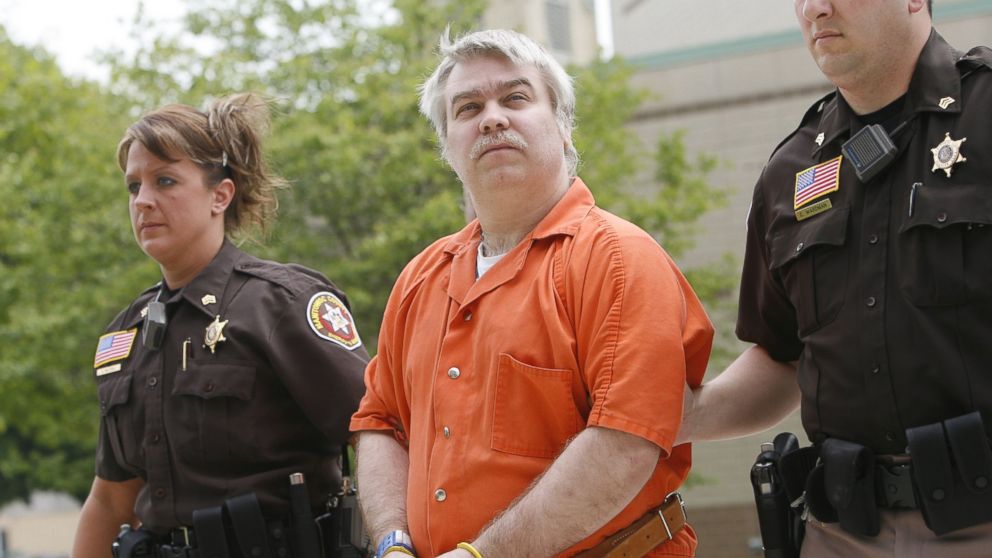5 Things to Know About Steven Avery From 'Making a Murderer'
— -- It's likely that over the past few weeks, you've heard people talking about the new series, "Making a Murderer."
Now, if a petition on the White House's website to pardon the show's main character, Steven Avery, reaches 100,000 signatures by Jan. 19, the administration will be required to address it too.
But what's the series all about?
The Netflix show explores the life of Avery, a Manitowoc County, Wisconsin native who spent 18 years in prison for a sexual assault he didn't commit. Avery was exonerated by DNA evidence in 2003, and then filed a $36 million lawsuit against the county, its former sheriff, Thomas Kocourek, and former district attorney, Denis Vogel.
The case was settled in 2006 for $400,000, according to the Associated Press.
However, in 2005, Avery was charged with killing photographer Teresa Halbach. He pleaded not guilty, but in 2007, he and his nephew Brendan Dassey were convicted of the crime. Avery was sent back to prison to serve a life sentence without the possibility of parole. He appealed, but the verdict was upheld in 2011, according to reports.
Critics of "Making a Murderer," including Ken Kratz, the former Wisconsin state prosecutor who handled the Halbach murder case, have slammed the show for being biased, but others have praised the series for shining light on Avery's life. Many have argued that he was wrongly convicted yet again.
Either way, Avery's life has been undeniably dramatic. Here are a few things to know.
1. He's a father: After marrying a 19-year-old single mother named Lori Mathiesen in 1982, the couple went on to have four children, including a set of twins, before Avery was sent to prison in 1985. According to Milwaukee magazine, Mathiesen went on to marry Avery's ex-brother-in-law, Peter Dassey, while Avery struck up a relationship behind bars with Sandy Greenman, who is featured in "Making a Murderer."
2. He has admitted to other crimes: Avery has said that he did not kill Halbach, but he did own up to committing other crimes when he was younger. In 1981, he was convicted of burglary, according to a 2005 article from the Associated Press. According to footage in the Netflix series, in 1982, he pleaded guilty to animal cruelty after he threw his family's cat over a bonfire, causing it to ignite. The AP reported that Avery poured gasoline on a cat and threw it into a bonfire. "I was young and stupid," he said in the series.
3. He has 70 point IQ: In "Making a Murderer," Reesa Evans, Avery's first public defender, said that Avery's IQ is 70, and that he "barely functioned in school."
4. His family believes the county had a bias against them for years: In the series, the Avery family is described as being insular, and as a result, are considered by some to be pariahs within the community. To that end, they believe that county authorities grossly mishandled Steven Avery's 1985 sexual assault case, and have implied that police set him up in the Halbach murder investigation. "There are 36 million reasons why they should be doing this to him," Avery's brother, Chuck, told the New York Times in 2005, referencing the $36 million lawsuit.
5. The documentary left out details about his murder trial: Kratz told ABC News that several details were excluded from the series. He told "Good Morning America" that Avery had drawn a picture of a "torture chamber" while in prison and added in an interview with Maxim that Avery's DNA was found in Halbach's car's trunk. Kratz also told "GMA" that on the day Halbach was murdered, Avery called her job to request that she come to his house and that he called Halbach's cell phone three times, twice using the a feature to hide who was calling. On the other hand, the Milwaukee Journal Sentinel reported that one juror was the father of an employee of the Manitowoc County Sheriff's Department and another was the husband of a woman who was employed by the Manitowoc County clerk of courts office. "I’d say that all of the most significant evidence of the state is in the series," "Making a Murderer" co-writer/director Laura Ricciardi told the Wrap. "It was a nearly six-week-long trial, and it would just be impossible for us to include all of the less significant evidence."




